AgriFutures Australia welcomes new Chairman
 HONEY BEE & POLLINATION / Thursday, 19 October 2023
HONEY BEE & POLLINATION / Thursday, 19 October 2023
Learning how to live with Varroa

Blink and you’d miss it- the Varroa mite’s minute presence is all but invisible to the naked eye. Yet the tiny mite is the greatest known threat to Australia’s honey bee and pollination industry. For nearly a year and a half the industry has been battling the tiny parasite, cumulating in the largest biosecurity outbreak in the country’s history and initiating a Federal $132 million varroa response plan.
This tiny menace is a parasitic mite that lives on honey bees and also feeds off the brood of a honey bee colony. It’s a difficult pest to eradicate or even manage as it causes a variety of damage, including reducing the health of the honey bees, impacting drone fertility and honey production. Without treatment, Varroa is responsible for entire colony losses.
Until June 2022, Australia was the last continent globally without Varroa mite, but to the shock of the industry Varroa was discovered in sentinel hives at the Port of Newcastle. After 15 months of attempting to eradicate the pest, the National Management Group, as the peak decision body for the National Varroa mite Emergency Response announced that it was no longer feasible to achieve eradication and that Australia will transition to a ‘management response.
Lessons from our neighbours
Despite the seriousness of the situation, producers are hopeful their industry will continue to thrive, with experts looking overseas for inspired approaches to continuing production alongside infestations.
Bianca Giggins is the Varroa Coordinator for the Australian Honeybee Industry Council (AHBIC). She’s recently returned from a tour of New Zealand with industry colleagues, including Bee Biosecurity Officers (BBOs), sponsored by AgriFutures Australia .
Australian BBOs work under the National Bee Biosecurity Program, a national industry-funded program administered by Plant Health Australia. They are the first line of communication and engagement for all beekeepers across the country.
“A BBOs’ role in Australia is to talk with beekeepers and help manage biosecurity in their colonies and their operation,” Ms Giggins said.
Over the course of eight day tour the Australian cohort of seven BBOs spoke with government agencies, key industry representatives and beekeepers with a variety of production scales. They were able to visit hives around Wellington, Lake Taupo, Palmerston North, Taihape, Hamiton and Auckland and were delighted to learn that growers not only continued production after their initial outbreak 15 years ago, but there have been many newcomers to the industry since.
“We were really surprised at the different behaviours of beekeepers, in terms of variety of production techniques and markets,” she said.
“And they are equally varied in their treatment of Varroa and the methodology behind why they chose a certain treatment at a certain time.”
Shifting to management
The group also studied a variety of control methods in New Zealand, which became immediately relevant on their return to Australia when the response to Varroa shifted from eradication to management.
“The National Management Group in charge of the decision-making process have unanimously agreed that it is no longer feasible to eradicate (Varroa). So that means we no longer contain or hold infected premises and euthanase them as per the original plan,” she said.
“This also means there’ll be a time period where that National Management Group and the Consultative Committee on Emergency Plant Pests will work together to come up with (a plan for) what transition to management actually looks like and a list of best practice management strategies.”
Currently, BBOs are bracing for Varroa to pop up in other regions of Australia. The New Zealand tour has been a tremendous learning opportunity for them and provided not only case study examples of managing outbreaks, but upskilling to provide best practice advice in the field.
It is anticipated that the transition to management plan will emphasise the need for beekeepers to be well informed about how to assess and monitor the levels of Varroa in colonies and to act accordingly for treatment with legally available methods. Bianca says the conditions of treatment may be very different depending on the location of the beekeeper’s operation.
“Eradication would’ve been amazing and it was an ambitious task,” she said.
“Varroa is our common enemy. We need to work together and understand that everybody’s affected by each and every beekeeper that is near them. You are only going to be as good as your neighbour.”
Bianca emphasised the tremendous opportunity presented for the different businesses, hobbyists and government agencies to unite, to formulate achievable Varroa mite management practices and allow production to grow.
“I think it’s a good time to be able to have courage to continue and be encouraged to lead in the new space that we’ve all found ourselves in.”
Your levy – your research. The AgriFutures Honey Bee & Pollination Program invests in research that ensures a productive, sustainable and profitable beekeeping industry and secures the pollination of Australia’s horticultural and agricultural crops. The Program has a research development and extension plan that identifies and balances the research priorities to support the longevity of the industry in Australia. This trip was funded by the AgriFutures Australia Capacity Building Program.
Listen to how NZ is learning to live with Varroa
Learn more about the AgriFutures Honey Bee & Pollination Program
Visit The Australian Honey Bee Industry Council (AHBIC) for more info on Varroa
Latest News
-
AgriFutures Australia welcomes new Chairman CORPORATE / 19.10.23
CORPORATE / 19.10.23 -
Protecting Australia's beekeeping future through smart traceability HONEY BEE & POLLINATION / 19.10.23
HONEY BEE & POLLINATION / 19.10.23 -
Meet your future agronomists: The five Horizon Scholars getting a career head start WORKFORCE AND LEADERSHIP / 19.10.23
WORKFORCE AND LEADERSHIP / 19.10.23 -
New data reveals $8 billion contribution of Australia’s chicken meat industry CHICKEN MEAT / 19.10.23
CHICKEN MEAT / 19.10.23






